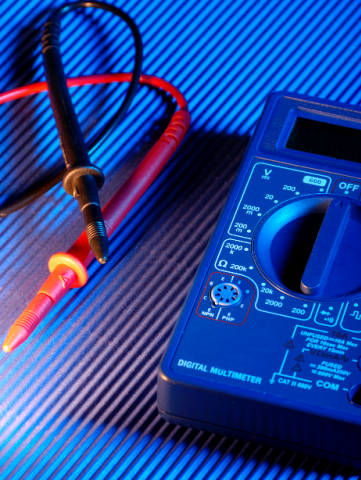IEC 61010-1 Standard
Safety requirements for electrical equipment for measurement, control, and laboratory use
This standard sets general safety rules for the following types of electrical equipment and their accessories:
a) Electrical test and measuring equipment
b) Electrical industrial process-control equipment
c) Electrical laboratory equipment
Electrical laboratory equipment is equipment used to measure, display, view, examine or analyze materials, or to prepare materials, and includes hardware used for diagnostic purposes in the artificial environment.
This standard does not apply to equipment covered by the following standards.
IEC 60065 (Audio, video and similar electronic devices)
IEC 60204 (Safety of machines - Electrical equipment in machines)
IEC 60335 (Electrical appliances used in the home and similar places)
IEC 60439 (Low-voltage switchgear and control devices)
IEC 60601 (Medical electrical equipment)
IEC 60950 (Information technology devices)
IEC 61558 (Power transformers, power supply units and similar equipment)
Standard items are listed below as main topics.
Marking and documentation
Protection against electric shock
Protection against mechanical hazards
Resistance to mechanical stresses
Protection against the spread of fire
Equipment temperature limits and resistance to heat
Protection against hazards from fluids and solid foreign objects
Protection against liberated gases and substances, explosion and implosion
Protection against explosion and inward explosion of released gases and substances
Components and sub-assemblies
Protection by interlocks
Hazards resulting from the application
Risk assessment
The purpose of the rules specified in the IEC 61010 standard is to ensure that the dangers to the operator and the surrounding area are reduced to a level that can be tolerated.
Safety Test (LVD Test)
Electrical safety tests (LVD test) are tests to verify the compliance of any commercial electrical product with the relevant standards. Various governments and organizations have developed requirements for electrical products sold worldwide. In most markets, a product must meet safety standards (LVD Test).
To verify compliance with these standards (LVD Test), the product should pass safety tests;
High Voltage Test
Insulation Resistance Test
Soil Continuity Test
Leakage Current Test
Dielectric Strength Test
It is applied between the power circuit of the test sample and the protective ground circuit. The test voltage must have a rated frequency of 50 Hz or 60 Hz. The greatest test voltage should be applied to the insulations to control the effectiveness of the insulations.
Insulation Resistance Test
The insulation resistance measured after the 500 V direct current (D.C.) Applied between the power circuit conductors of the test sample and the ground circuit should be greater than 100 MΩ.
Earth Continuity Test
In soil continuity, the reliability of the grounding system of the test sample is checked. The resistance of each protective earth circuit between the protective earth terminal and the areas of the sample that are expected to be earthed should be measured with an appropriate test equipment. The test result is evaluated as positive or negative according to the values specified in the standard.
Leakage Current Test
The leakage current test is the measurement of the current flowing between the accessible surfaces of the test sample and the soil with a suitable test equipment under normal, abnormal and error conditions. As a result of the experiment, controls are carried out within the limits given by the standard.

